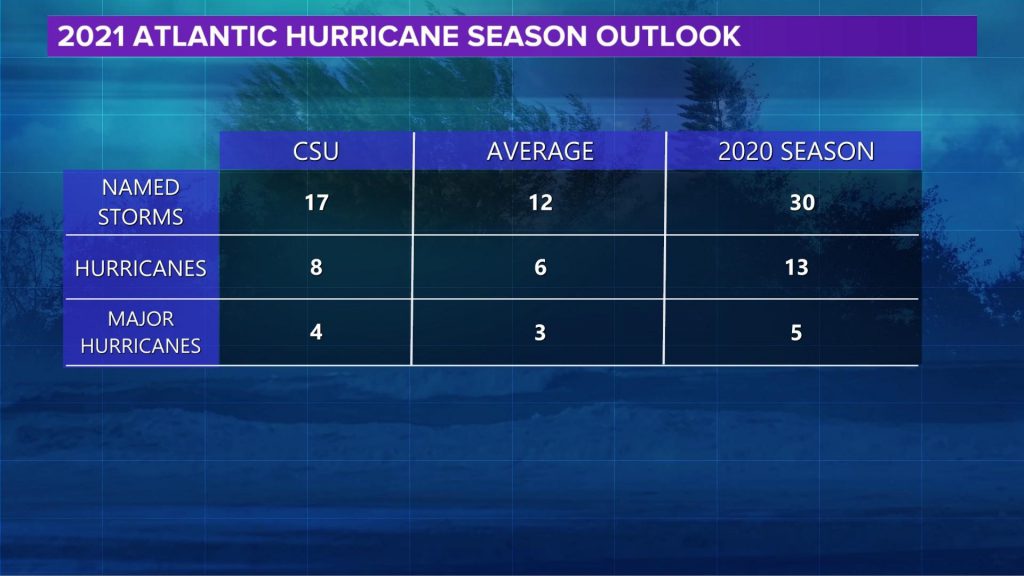Researchers at Colorado State University (CSU) are predicting an above average hurricane season this year. The main driver behind that prediction is the likely absence of El Niño, according to the release. Other factors include near-normal tropical Atlantic sea surface temperatures and much warmer than normal subtropical Atlantic sea surface temperatures.
According to CSU’s Dr. Phil Klotzbach, El Niño tends to increase upper-level westerly winds across the Caribbean into the tropical Atlantic, tearing apart hurricanes as they try to form. The lack of El Niño is what led CSU researchers to forecast 17 named storms, 8 hurricanes and 4 major hurricanes (category 3+). Those numbers are above the climatological average of 14 named storms, 7 hurricanes and 3 major hurricanes.
The National Oceanic and Atmospheric Administration (NOAA) will release its initial 2021 hurricane forecast late May. NOAA says the average hurricane season now includes 14 named storms and seven hurricanes up from 12 and 6 respectively. The average number of major hurricanes remains unchanged at three.
The hurricane season runs from June 1st to November 30th.

